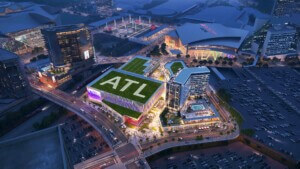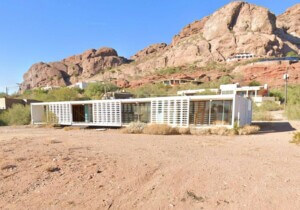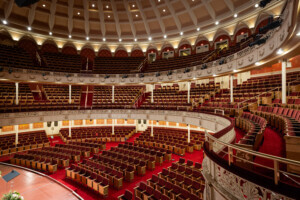A 1973 Brutalist bank building believed to have been designed by César Pelli while under the employ of Gruen Associates has been cleared for demolition in downtown San Jose, California, by a Santa Clara County Superior Court judge.
As reported by the Mercury News, Judge Sunil Kulkarni’s final ruling yesterday on the drawn-out legal crusade to spare the old Bank of California building at 170 Park Avenue from the wrecking ball denies a petition filed by the nonprofit Preservation Action Council of San Jose in September 2020. The petition sought to rescue the structure by delaying the construction of a sprawling tech campus set to transform San Jose’s old CityView Plaza so that development plans could be reconfigured to incorporate the preserved building. The petition, which argued that the redevelopment scheme was subject to a flawed environmental review process by the San Jose City Council and should be revisited, was filed three months after the City Council gave developer Jay Paul Co. its blessing to proceed with demolition of the hulking concrete bank building best known locally for its abstractly sphinxlike attributes. Eight other structures in the immediate area will also be razed to make way for a trio of interconnected glass office towers designed by Gensler that will anchor the new CityView Plaza.
This September, Santa Clara County Superior Court issued a tentative order permitting demolition work to proceed, subject to the final ruling made yesterday by Judge Kulkarni.
Ben Leech, executive director of the Preservation Action Council, argued that the towers could be built without demolishing the Pelli building, which he envisioned as being spiffed up and given new life within the tech-centered redevelopment zone. In total, the building encompasses just half an acre of the 8.1-acre site, which will ultimately include 3.6 million square feet of office space and 24,000 square feet of retail.
In the months leading up to the San Jose City Council’s decision in September 2020, a coalition of preservationists led by the Preservation Action Council rallied to have the Bank of California building declared as a historic city landmark. Although the city’s Historic Landmarks Commission voted unanimously in May of last year to initiate the process of recommending that the building be landmarked, that effort obviously did not pan out. At the time, the plight garnered a considerable amount of attention in the Bay Area and beyond due in part to the Preservation Action Council’s “Save the Sphinx” campaign, which referred to the then-proposed, now-imminent demolition of the “historic, iconic building” as both “shortsighted and unnecessary.”
As San Jose’s now-former historic preservation officer Juliet Arroyo relayed the Mercury News last year, the former bank building, which in its later years was used as a county courthouse before sitting empty, serves as the “best example” of Brutalist architecture in California’s third-most populous city and is “significant because of its quality of design, attention to design detail, materials, and construction method.”
In his rejection of the petition, Judge Kulkarni stated that “no delay is warranted” in proceeding with demolition in order for the city to conduct another environmental impact review. The judge also disagreed with the Preservation Action Council’s argument that Jay Paul Co.’s redevelopment plans could be adjusted to accommodate the building. “Substantial evidence supports the city’s finding that keeping the (bank) building is infeasible, in light of technical and economic considerations,” he noted.
As reported by The Mercury News, the judge also had a few observations on Brutalism. “Some people think brutalist buildings are cold, impersonal and ugly,” he remarked in his final decision. “Others think such buildings are bold, striking and designed for the public at large.”
While the Bank of California building has been widely credited as an early design of Pritzker Prize-winning Pelli, others, including at least one person intimately involved with the building’s construction, have argued otherwise. As detailed by the San Jose Spotlight last year, sports franchise-owner and developer Lew Wolff, who led the early 1970s redevelopment of CityView Plaza, explained to city council members last year that the building “was actually sketched out at a dinner table in my house years and years ago with another architect named Sid Brisker. In my opinion, it’s not an example of any form of architecture, especially (Brutalist) or whatever the term that they assigned to it after they found that César wasn’t the sole architect.” Preservationists have refuted the claims made by Wolff. The Real Deal noted earlier this fall that the controversy surrounding Pelli’s involvement with the project was not mentioned by Judge Kulkarni in his tentative order issued on September 8.
“We appreciate the court’s thoughtful ruling that the city’s approvals were lawful,” said Matt Lituchy, chief investment officer with Jay Paul Co., with regard to the final ruling in a statement shared by the Mercury News. Both Leech and the attorney representing the Preservation Action Council in the matter both declined to comment to the paper at the time.











